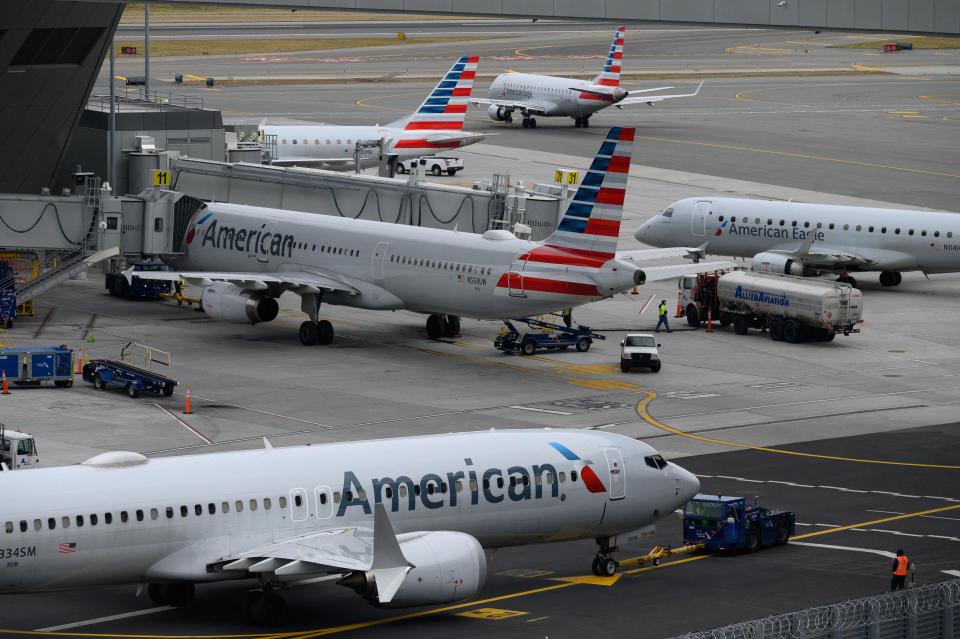Tech updates, small seats: 5 key takeaways from the Congressional hearing on Transportation Safety
Officials from the Department of Transportation and other organizations with a stake in aviation safety answered questions from the House Transportation and Infrastructure Committee on Capitol Hill Tuesday as lawmakers prepare to reauthorize funding for the Federal Aviation Administration.
The hearing comes on the heels of the national air transportation system shutdown, which was the result of a computer system error at the FAA. Many of the questions from the panel were focused on the agency's technology and related needs as a result.
According to DOT officials, the issue was caused by a file being unintentionally deleted in the Notice to Air Missions system, which provides pilots with crucial safety information at all of the nation's airports.
"The system's lack of redundancies and outdated technology is what allowed it to happen in the first place," ranking member Rick Larsen, D-Wash., said in his opening statement.
Pilots are required to review Notice to Air Missions updates before every flight, and when the system went offline briefly on Jan. 11, the FAA implemented a nationwide ground stop, pausing departures across the country until the issue was resolved.
Here are the five key takeaways from Tuesday's hearing:
1. Calls for IT upgrades at the FAA
Representatives and panelists alike acknowledged that the FAA relies on outdated technology for many crucial functions.
Pete Bunce, president and CEO of the General Aviation Manufacturers Association, said in his testimony that the Notice to Air Missions system at the center of last month's outage was "antiquated" and encouraged further research into new technology that could help make it easier to use for pilots and more redundant in the event of an error.
What was behind the FAA outage?: Experts say old tech could be responsible
"We all have the interest that systems be state of the art," said Dave Boulter, the FAA's acting associate administrator for aviation safety.
"The pace of technology, as we all know, has increased, but the pace of our processes has not," he added. "My number one goal in the aviation safety organizations is to get that speed without ever degrading safety."
2. Updates on the 5G rollout
Representatives on the committee also expressed concerns about the tumultuous rollout of 5G technology by cell service providers, saying that the FAA and Federal Communications Commission should have worked more closely together to make sure their systems did not come into conflict.
"There should have been better collaboration between the FAA and FCC on this issue," Jason Ambrosi, president of the Air Line Pilots Association, testified.
Boulter, from the FAA, agreed and said that progress is being made, and both agencies are evaluating their processes for future projects.
"Since the power reductions (to 5G signals) have been agreed upon, we're in a good space," he said.
What does airplane mode do?: It's safer to have it on your phone when you fly, experts say
3. Renewed attention on airplane seats
Rep. Steve Cohen, D-Tenn., took the FAA to task for not fulfilling a mandate in its previous authorization to study and establish minimum seat dimensions for passenger aircraft.
He encouraged the agency's representative on the panel to evaluate public comments submitted on the issue and work to make progress on finalizing new rules.
"You have my assurance that we will get through those comments," Boulter said.
'The space was not built for me': Plus-size flyers say airlines have room to improve

4. Cabin air quality monitoring
Rep. John Garamendi, D-Calif., called out the agency for not making progress on monitoring aircraft cabin air quality. He said the FAA should be doing more to push airlines to install monitors on board that would notify crews if potentially dangerous chemicals got into the air supply.
It's not unheard of for toxins to get into airplane cabins, especially if one of the systems on board malfunctions because many planes are designed to use air that passes through the engines as part of their recirculation system.
Garamendi compared the lack of onboard air quality monitors to renting an apartment without a smoke or carbon monoxide detector.
I measured CO2 levels on a plane: It showed me when I was most likely exposed to COVID
5. FAA reauthorization process continues
Issues related to the FAA and its funding are likely to remain front and center in Washington this year as Congress prepares to approve legislation to keep the agency going for another five years later in the session.
This article originally appeared on USA TODAY: What to know from the House transportation safety hearing Tuesday


